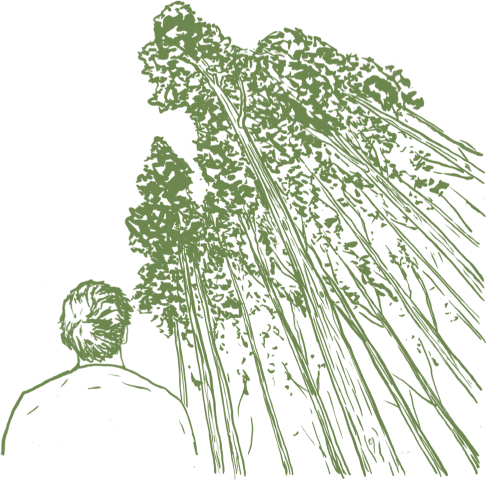
Whether admiring the great elders of the forest or stopping to notice a beautiful lone street tree in the city, take a minute to appreciate trees – the giants amongst whom we live. As well as being majestic and beautiful, trees can also give us clues and information about our location and the weather, amongst other things. I particularly like these techniques because they remind me to take a closer look at trees and you never know what else you’ll notice while you’re there; water droplets formed on a spider’s web, nesting birds, bark patterns … the list is endless.

In the northern hemisphere, you can often observe a ‘tick effect’ in the branches of isolated deciduous trees, where the branches are more voluminous and grow horizontally on the southern side due to the greater amount of sunlight they receive. Walk around all four sides of trees such as these and use the tick effect to orientate yourself southwards.

Predict the weather by watching pine cones as they open or close.
On dry, warmer days, the cones will dry out and open whereas wetter weather will cause the cone to swell and close.

The wind can blow in any direction, but the geography of a place means there is usually a prevailing wind that shapes the upper branches of exposed trees. This means that if you know the direction of the prevailing wind wherever you are, then this effect on the branches will point you in that direction. In the UK, for example, the prevailing wind blows from the south-west towards the north-east.